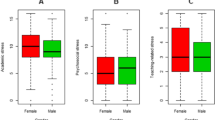Abstract
In this competitive era, students are undergoing a lot of stress due to societal influence, financial status, and academic environment. This is leading to many psychological disorders such as depression, anxiety, and many others. One student commit suicide every hour in India, and in most of the cases, stress and pressure are the main reasons for the deadly attempt. The high level of stress is hindering the performance of the students in the academics. It is necessary to find out the stress level of the students and guide them through different techniques that help them in reducing stress levels. There are many ways to investigate the level of stress among the students. Techniques like psychological questionnaires, physiological measures like blood pressure, salivary alpha amylase, and vagal tone can be considered for analyzing stress in students. Perceived stress scale (PSS) is one of the standard psychological questionnaire methods used to analyze stress level of an individual. It is a measure of degree to which situations in one’s life are appraised as stress. The scale includes a series of general queries about present level of stress experience. The scale is free of content specific to any subpopulation group. The PSS is used to categorize the subjects as less stressed, moderately stressed, and highly stressed. The data through responses from 486 engineering students was collected to investigate the stress level of the students. The data thus obtained is validated using the statistical tool ANOVA. ANOVA test is a way to find out if experimental results are significant. The gathered data is validated for statistically significant group and used for further analysis. The results from the analysis of PSS showed that the female students are less stressed when compared to the male students. The result can further be imbibed in an intelligent system which could detect the level of stress and suggest a method or technique to the subject so as to reduce the level of stress.
Access this chapter
Tax calculation will be finalised at checkout
Purchases are for personal use only
Similar content being viewed by others
References
https://whatsscience.in/stress-level-detection-at-our-fingertips/
Heinen, I., et. al.: Perceived stress in first year medical students—associations with personal resources and emotional distress. BMC Med. Educ. 17, 4 (2017). https://doi.org/10.1186/s12909-016-0841-8
Pedhazur, E.J., Schmelkin, L.P.: Measurement, Design, and Analysis. Lawrence Erlbaum Associates, Hillsdale (1991)
Fayers, P.M., Machin, D.: Quality of Life, 2nd edn. Wiley, West Sussex (2007)
Leung, D.Y., Lam, T., Chan, S.S.: Three versions of perceived stress scale: Validation in a sample of Chinese cardiac patients who smoke. BioMed Central Public Health 10, 513 (2010)
Cohen, S., Williamson, G.: Perceived stress in a probability sample of the United States. In: Spacapan, S., Oskamp, S. (eds.) The Social Psychology of Health: Laremont Symposium on Applied Social Psychology. Sage, Newbury Park (1988)
Lavoie, J.A.A., Douglas, K.S.: The perceived stress scale: evaluating configural, metric and scalar invariance across mental health status and gender. J. Psychopathol. Behav. Assess. 34, 48–57 (2012)
Gitchel, W.D., Roessler, R.T., Turner, R.: Gender effect according to item directionality on the perceived stress scale for adults with multiple sclerosis. Rehabil. Couns. Bull. 55, 20–28 (2012)
Cohen, S., Kamarch, T., Mermelstein, R.: A global measure of perceived stress. J. Health Soc. Behav. 24, 385–396 (1983)
Howell, D.: Statistical Methods for Psychology, pp. 324–325. Duxbury. ISBN 0-534-37770-X. (2002)
Mimura, C., Griffiths, P.: A Japanese version of the perceived stress scale: translation and preliminary test. Int. J. Nurs. Stud. 41, 379–385 (2004)
Mitchell, A.M., Crane, P., Kim, Y.: Perceived stress in survivors of suicide: Psychometric properties of the perceived stress scale. Res. Nurs. Health 31, 576–585 (2008)
Andreou, E., Alexopoulos, E.C., Lionis, C., Varvogli, L., Gnardellis, C., Chrousos, G.P., et al.: Perceived stress scale: Reliability and validity study in Greece. Int. J. Environ. Res. Public Health 8, 3287–3298 (2011)
Acknowledgements
The study is conducted under the competitive research grant, TEQIP scheme funded by Visveswaraya Technological University, Belagavi. We sincerely thank university for supporting us in the course of work. We thank KLS Gogte Institute of Technology, Belagavi, and BMS College of Engineering, Bengaluru, for supporting us to work on this project.
Author information
Authors and Affiliations
Corresponding author
Editor information
Editors and Affiliations
Rights and permissions
Copyright information
© 2021 The Editor(s) (if applicable) and The Author(s), under exclusive license to Springer Nature Singapore Pte Ltd.
About this paper
Cite this paper
Kenchannavar, H.H., Perur, S.D., Kulkarni, U.P., Hegde, R. (2021). Statistical Analysis of Stress Levels in Students Pursuing Professional Courses. In: Senjyu, T., Mahalle, P.N., Perumal, T., Joshi, A. (eds) Information and Communication Technology for Intelligent Systems. ICTIS 2020. Smart Innovation, Systems and Technologies, vol 195. Springer, Singapore. https://doi.org/10.1007/978-981-15-7078-0_45
Download citation
DOI: https://doi.org/10.1007/978-981-15-7078-0_45
Published:
Publisher Name: Springer, Singapore
Print ISBN: 978-981-15-7077-3
Online ISBN: 978-981-15-7078-0
eBook Packages: Intelligent Technologies and RoboticsIntelligent Technologies and Robotics (R0)




